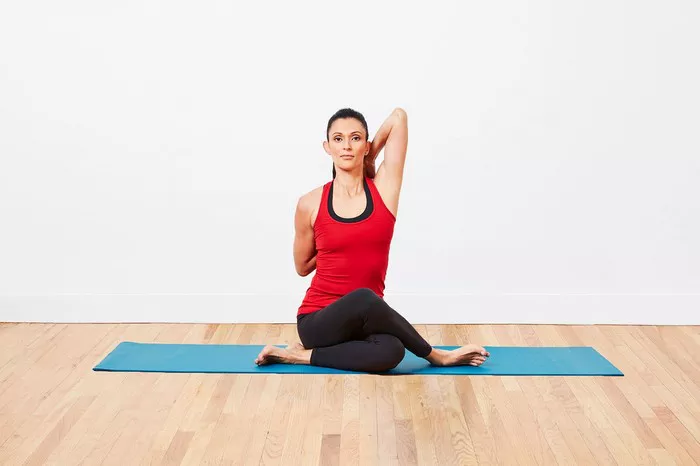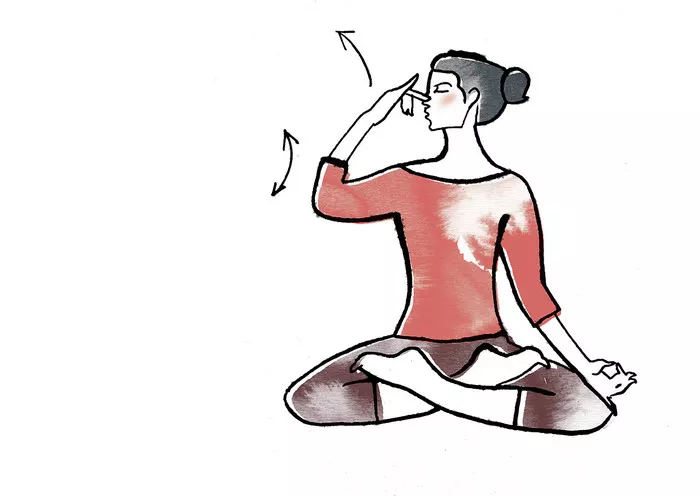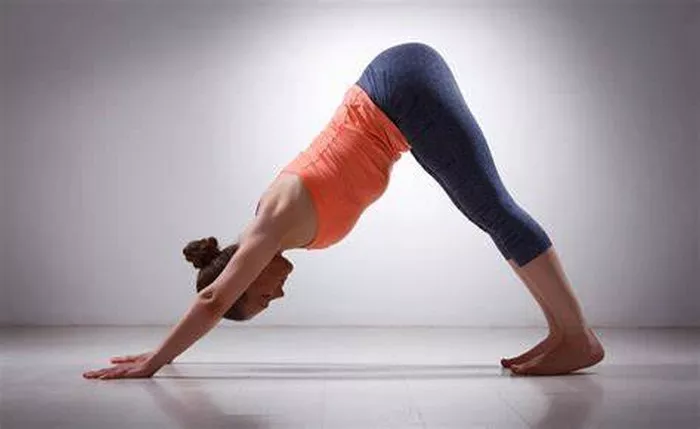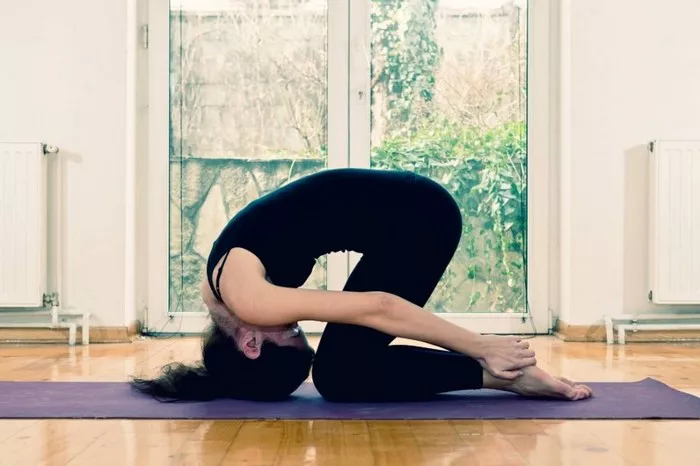Chandra Namaskar, or Moon Salutation, is a series of yoga asanas performed in a sequence that honors the energy of the moon. Unlike Surya Namaskar, which is more stimulating and associated with solar energy, Chandra Namaskar is calming and introspective. It is often practiced in the evening or during the full moon to align with lunar cycles. The sequence typically includes postures that promote flexibility, balance, and mental tranquility. Practicing Chandra Namaskar can help individuals connect with their feminine energy, improve lymphatic circulation, and encourage a meditative state of mind.
The Menstrual Cycle and Its Phases
The menstrual cycle is a complex biological process that typically spans 28 to 35 days and is divided into four phases: the menstrual phase, the follicular phase, ovulation, and the luteal phase. During menstruation, the body sheds the uterine lining, often accompanied by cramps, fatigue, and mood fluctuations. Hormone levels fluctuate significantly, impacting physical energy, emotional states, and even motivation. Understanding these changes is crucial when determining suitable physical activities during this time. Every individual experiences menstruation differently, and sensitivity to physical exertion can vary significantly.
General Yoga Guidelines During Menstruation
Yoga practice during menstruation is a personal choice and often depends on how one feels physically and emotionally. In general, yoga instructors advise gentle and restorative postures during periods. Poses that put pressure on the abdomen or involve inversions are typically discouraged, as they can disrupt the natural downward flow of menstruation. Instead, the focus is usually on poses that promote relaxation, ease cramps, and reduce stress. Breathing exercises, gentle stretching, and mindful movement can offer significant benefits during this time.
Can You Practice Chandra Namaskar During Periods?
1. Evaluating the Intensity
Chandra Namaskar is inherently gentler than Surya Namaskar. It focuses on fluidity and grace, making it more suitable for practice during menstruation compared to high-impact or heat-building sequences. However, the suitability still depends on the individual’s comfort and the specific version of Chandra Namaskar being practiced. Some variations may include dynamic transitions and deep lunges, which could be strenuous during heavy flow or when experiencing cramps.
2. Listening to Your Body
Your body is the most reliable guide. If you feel fatigued, bloated, or are experiencing severe cramps, it may be best to rest or opt for more restorative practices. On the other hand, if movement helps alleviate discomfort, a modified Chandra Namaskar sequence could be beneficial. Always begin your session with mindfulness, paying attention to your physical cues and respecting your body’s signals. Avoid pushing yourself to complete the full sequence if it doesn’t feel right.
3. Modifications and Alternatives
If you decide to perform Chandra Namaskar during your period, consider modifying certain postures to reduce strain on the abdominal area. For example:
- Replace deep lunges with gentle low lunges or supported versions.
- Skip any pose that feels uncomfortable or increases menstrual discomfort.
- Add props like yoga blocks or bolsters to support your body and reduce strain.
- Slow down the pace of the sequence to make it more meditative and less exerting.
By making these adjustments, you can still benefit from the calming and centering effects of Chandra Namaskar without overexerting yourself.
Benefits of Gentle Chandra Namaskar During Menstruation
1. Emotional Balance
Hormonal fluctuations during menstruation can lead to mood swings and emotional sensitivity. The meditative quality of Chandra Namaskar can help regulate emotions and instill a sense of peace. The flowing movements encourage introspection and self-awareness, which can help in managing irritability and emotional stress.
2. Enhanced Circulation
Gentle movement promotes blood circulation, which can alleviate menstrual cramps and reduce bloating. Chandra Namaskar includes poses that gently stretch and massage the abdominal and pelvic regions, helping relieve tension and encourage better flow.
3. Stress Reduction
Practicing Chandra Namaskar slowly and mindfully can activate the parasympathetic nervous system, which is responsible for rest and digestion. This can reduce cortisol levels, ease anxiety, and support better sleep. A few cycles of a modified moon salutation can significantly improve how you feel physically and emotionally during your period.
Poses to Approach With Caution
Some asanas within the Chandra Namaskar sequence may not be suitable during menstruation due to their impact on the pelvic region or inversion of the body. Here are a few to consider modifying or avoiding:
- Forward folds: While some gentle forward bends may relieve back tension, deep folds can compress the abdomen excessively.
- Low lunge with a backbend: This posture can overly stretch the lower abdomen, which might be uncomfortable.
- Inversions (if included): Although rare in basic Chandra Namaskar, if inversions like shoulder stands or headstands are incorporated, they should be avoided to maintain the natural flow of menstruation.
Creating a Menstruation-Friendly Chandra Namaskar Sequence
To adapt Chandra Namaskar for your menstrual cycle, focus on creating a nurturing and supportive sequence. Here is a general guideline:
- Start with Breath Awareness: Begin by sitting in a comfortable posture, focusing on deep, diaphragmatic breathing for a few minutes.
- Gentle Side Bends: Incorporate standing side stretches to open the body without straining.
- Low Lunge Modifications: Keep the back knee on the ground and use props for support.
- Avoid Deep Twists and Backbends: These can strain abdominal muscles.
- End with Supported Restorative Poses: Use props to practice supported child’s pose or reclining bound angle pose to close your session calmly.
This sequence emphasizes comfort, mindfulness, and gentle movement. It’s designed to support your body’s needs without imposing unnecessary stress.
Scientific Perspective on Exercise During Menstruation
From a scientific standpoint, moderate physical activity during menstruation can offer multiple benefits. Studies have shown that gentle exercise may help alleviate menstrual symptoms such as cramps, fatigue, and mood disturbances. Engaging in low-impact exercises like yoga can promote endorphin release, which acts as a natural painkiller and mood booster. However, intensity is key. Overexertion can lead to increased fatigue or aggravation of symptoms.
Chandra Namaskar, when practiced mindfully, aligns well with the scientific consensus on beneficial menstrual movement. It’s essential to tailor the routine to your energy levels and needs, allowing for a personalized and safe experience.
Traditional and Cultural Views
In traditional yogic and Ayurvedic practices, menstruation is considered a time for inward reflection and reduced physical exertion. The emphasis is often on conserving energy and engaging in meditative or spiritual practices. Some lineages discourage asana practice entirely during menstruation, while others allow gentle movement depending on the individual’s condition. These views are rooted in the idea that menstruation is a time of purification and should be honored as such.
It’s important to approach traditional guidelines with respect but also adapt them to modern lifestyles and personal health considerations. What’s most important is that the practice feels supportive rather than depleting.
Expert Opinions
Many modern yoga instructors and health practitioners advocate for a balanced approach. They recommend tuning into your body and choosing practices that align with your current energy and symptoms. Experts often agree that there is no one-size-fits-all answer. While some women may feel empowered and comforted by a gentle Chandra Namaskar sequence, others may prefer complete rest.
Gynecologists also acknowledge that moderate exercise can help manage menstrual symptoms, but they caution against ignoring signs of fatigue or overexertion. Individual differences in menstrual experiences must be considered.
Listening to Your Inner Wisdom
Ultimately, whether or not to practice Chandra Namaskar during your period should be guided by self-awareness. No external authority can fully understand your unique physical and emotional landscape. Journaling your experience, noting how you feel before and after practicing, and adjusting accordingly can help build a sustainable and nourishing yoga routine.
Give yourself permission to modify, skip, or fully embrace your practice depending on what serves you best on any given day. Yoga is a tool for self-discovery, not a rigid regimen to be followed without question.
Conclusion
Yes, you can do Chandra Namaskar during your period, but it depends entirely on your personal experience and how you adapt the sequence. With thoughtful modifications, a gentle pace, and attentive self-awareness, Chandra Namaskar can become a supportive and calming practice during menstruation. The key is to honor your body’s needs, embrace a flexible mindset, and prioritize comfort and self-care above all. By doing so, you not only maintain a yoga routine but also deepen your connection with yourself.
Related Topics:




















